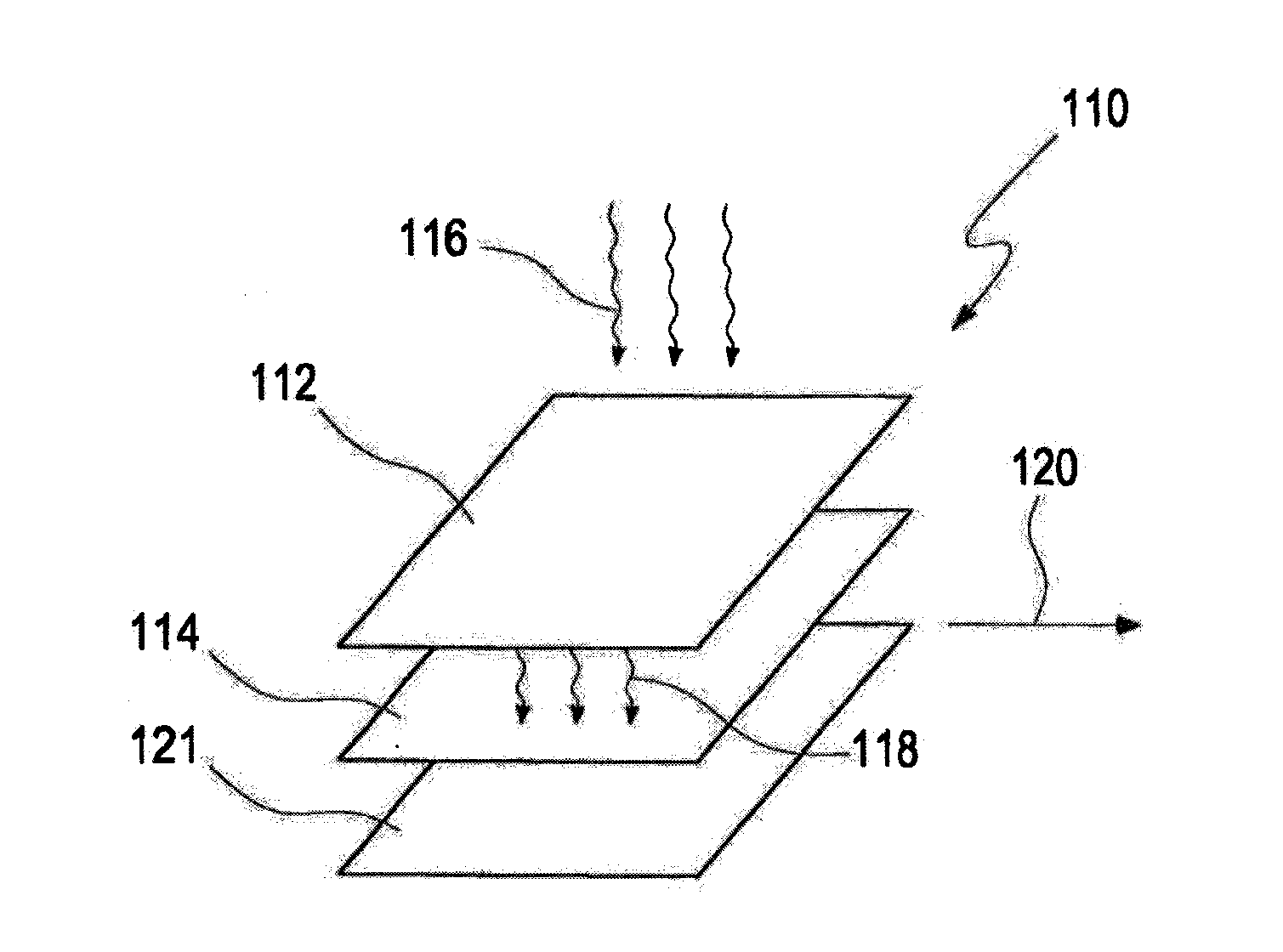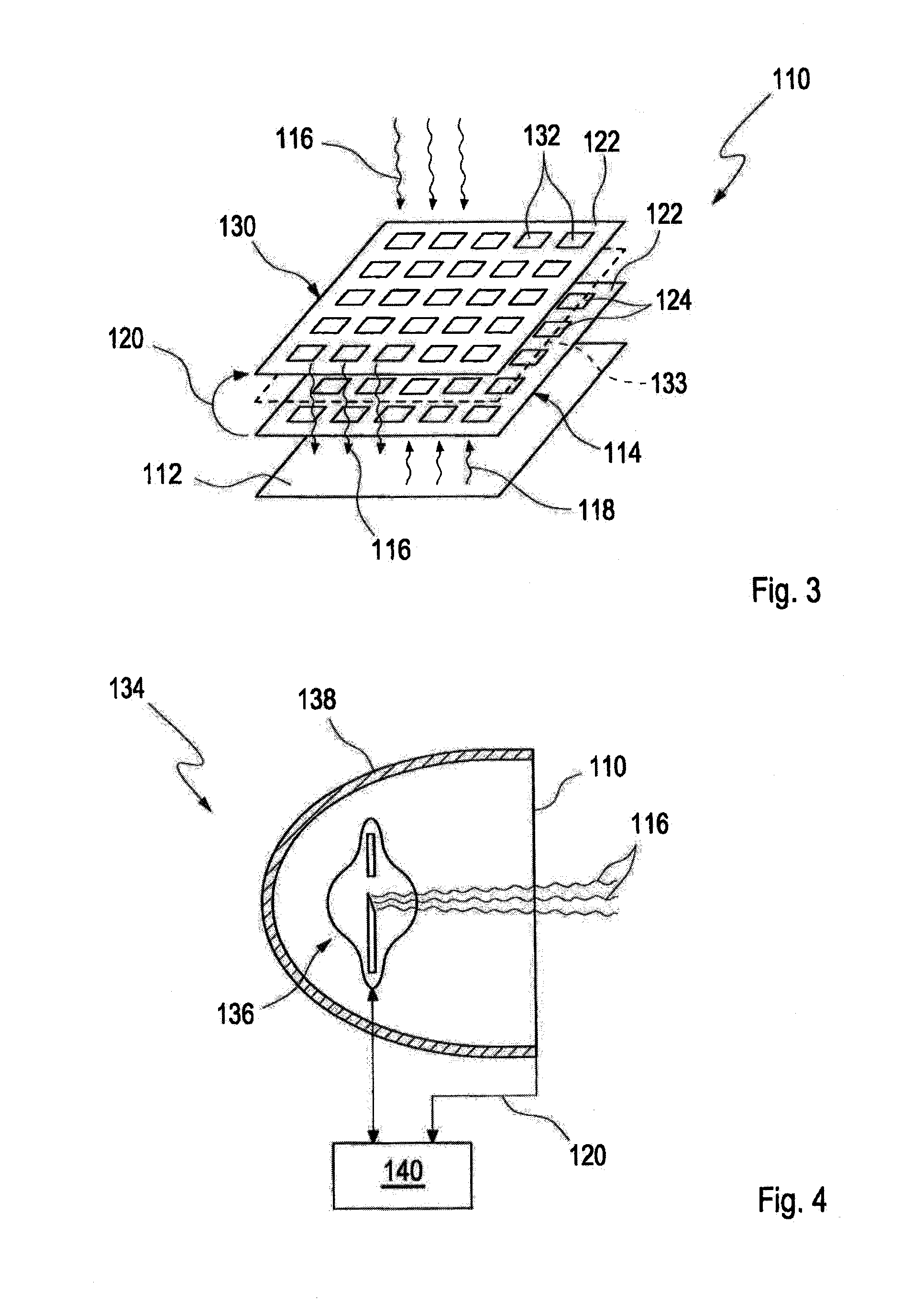Detector for the detection of ionizing radiation
a technology for detecting detectors and ionizing radiation, which is applied in the direction of radiation intensity measurement, instruments, x/gamma/cosmic radiation measurement, etc., can solve the problems of high cost of known detectors, high cost of manufacturing, operation and evaluation, and complex technology, so as to achieve more economical and safer effects
- Summary
- Abstract
- Description
- Claims
- Application Information
AI Technical Summary
Benefits of technology
Problems solved by technology
Method used
Image
Examples
Embodiment Construction
[0048]FIG. 1 shows a highly schematic representation of a simple exemplary embodiment of a detector 110 according to the invention for detecting ionizing radiation. In this exemplary embodiment, detector 110 is implemented as a layer structure and includes one layer of a scintillator 112, for example an organic scintillator 112, and one layer of an organic photovoltaic element 114, for example a layer of an organic solar cell. Scintillator 112 is configured to at least partially absorb ionizing radiation 116 and to convert it to electromagnetic radiation 118. Organic photovoltaic element 114, in turn, is configured to at least partially absorb organic electromagnetic radiation 118 and to generate at least one electrical signal, which is identified symbolically by reference numeral 120 in FIG. 1. For example a carrier layer, which is identified symbolically by reference numeral 121 in FIG. 1, may furthermore be optionally provided in this exemplary embodiment of detector 110.
[0049]FI...
PUM
 Login to View More
Login to View More Abstract
Description
Claims
Application Information
 Login to View More
Login to View More - R&D
- Intellectual Property
- Life Sciences
- Materials
- Tech Scout
- Unparalleled Data Quality
- Higher Quality Content
- 60% Fewer Hallucinations
Browse by: Latest US Patents, China's latest patents, Technical Efficacy Thesaurus, Application Domain, Technology Topic, Popular Technical Reports.
© 2025 PatSnap. All rights reserved.Legal|Privacy policy|Modern Slavery Act Transparency Statement|Sitemap|About US| Contact US: help@patsnap.com



